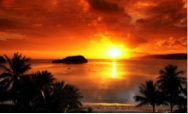 Sunrise, the poem I was setting to music, was written by a child too young to know about the previous 5000 years of patriarchal mythology that stood the ancient goddess myths on their heads. Searching under the piano lid for sonic relief from the fire in my gut, I used wild extended piano techniques that poured out sounds of elemental mysteries. Grating and sputtering like crystal along the piano strings, the music lifted the classical vocalese of the mezzo soprano. Over the tumult, the lyrics challenged: Who dareth to speak against the Sunrise. Her Beauty overpowereth. No One. Beneath the verse the music darted like creatures awakening in sun glistened foliage. Penned by my younger sister Jacqui Reher, who was 8 years old at the time, the text was a revelation of feminist assertion and the power of Nature. My quixotic approach to musical composition was rooted in my unlikely confidence that I was a sense organ of the Infinite ready to share my insights. My intuitive sense was that Universal Intelligence was embodied in Nature and would ignite my own awakening. Creating music about that journey was my reason for being here.Later, this impetus would be described by Kyle Gann in the Village Voice as “She comes to New York as one of those occasional blasts of fresh air from a larger world that are another way of taking us back to nature.”The Thing in It SelfMary Ellen Solt, renowned concrete poet and my mentor, was honored in my setting of her poem Forsythia. The poem is the thing in itself, not about itself. Nor is it a description of a forsythia bush. It is its life blood.The imaginative construction of the poem visually depicts a forsythia bush, the first plant to appear in spring. It has tiny yellow flowers covering long stems which Solt saw as a telegraph message announcing spring.
Sunrise, the poem I was setting to music, was written by a child too young to know about the previous 5000 years of patriarchal mythology that stood the ancient goddess myths on their heads. Searching under the piano lid for sonic relief from the fire in my gut, I used wild extended piano techniques that poured out sounds of elemental mysteries. Grating and sputtering like crystal along the piano strings, the music lifted the classical vocalese of the mezzo soprano. Over the tumult, the lyrics challenged: Who dareth to speak against the Sunrise. Her Beauty overpowereth. No One. Beneath the verse the music darted like creatures awakening in sun glistened foliage. Penned by my younger sister Jacqui Reher, who was 8 years old at the time, the text was a revelation of feminist assertion and the power of Nature. My quixotic approach to musical composition was rooted in my unlikely confidence that I was a sense organ of the Infinite ready to share my insights. My intuitive sense was that Universal Intelligence was embodied in Nature and would ignite my own awakening. Creating music about that journey was my reason for being here.Later, this impetus would be described by Kyle Gann in the Village Voice as “She comes to New York as one of those occasional blasts of fresh air from a larger world that are another way of taking us back to nature.”The Thing in It SelfMary Ellen Solt, renowned concrete poet and my mentor, was honored in my setting of her poem Forsythia. The poem is the thing in itself, not about itself. Nor is it a description of a forsythia bush. It is its life blood.The imaginative construction of the poem visually depicts a forsythia bush, the first plant to appear in spring. It has tiny yellow flowers covering long stems which Solt saw as a telegraph message announcing spring.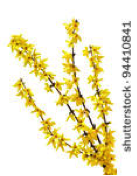 The words Forsythia’s Out Race Springs Yellow Telegram Hope Insists Action – run vertically along the bottom of the page creating the base of the bush. Emanating from the word FORSYTHIA is a string of arching Morse code, the dots and dashes creating the tiny yellow blooms of the flower on curving stems. The poem describes the thing in itself and as such it captures quintessence. It is not the idea of the flower but the thing in itself. The metaphor is concrete. In creating my art I wanted the music to be the crux of the subject – not a description. The synket, one of the first performance synthesizers, produced the unique sounds that I used to express the flower’s inner life. Oscillators I could twirl in real time, moving from the low pulses that imitated Morse code to ethereal high warbles of sound conveyed the mystery of life reemerging in the flower. I decided I would use abstract sounds created from electricity – which is a force of nature, to represent the inner life of things in my compositional palette. Above the electronic accompaniment, a multi-layering of vocal sounds depicted simultaneously the telegraphic rhythms, the English words and the primal thrusts of spring. The multi-layering of sounds conveyed the multiple layers of meaning in the poem. In The Moon Dreams Her I use multi-layering of sound again. To create the piece, I invited the moon to dream me, and to pour her music and poetry through me at night. An elaborate synesthetic ritual I fashioned to get at the thing in itself, not the idea of the thing, but the thing in itself, involved nocturnal sonic moon meditations played on my synthesizer and recorded at the shore of the ocean.
The words Forsythia’s Out Race Springs Yellow Telegram Hope Insists Action – run vertically along the bottom of the page creating the base of the bush. Emanating from the word FORSYTHIA is a string of arching Morse code, the dots and dashes creating the tiny yellow blooms of the flower on curving stems. The poem describes the thing in itself and as such it captures quintessence. It is not the idea of the flower but the thing in itself. The metaphor is concrete. In creating my art I wanted the music to be the crux of the subject – not a description. The synket, one of the first performance synthesizers, produced the unique sounds that I used to express the flower’s inner life. Oscillators I could twirl in real time, moving from the low pulses that imitated Morse code to ethereal high warbles of sound conveyed the mystery of life reemerging in the flower. I decided I would use abstract sounds created from electricity – which is a force of nature, to represent the inner life of things in my compositional palette. Above the electronic accompaniment, a multi-layering of vocal sounds depicted simultaneously the telegraphic rhythms, the English words and the primal thrusts of spring. The multi-layering of sounds conveyed the multiple layers of meaning in the poem. In The Moon Dreams Her I use multi-layering of sound again. To create the piece, I invited the moon to dream me, and to pour her music and poetry through me at night. An elaborate synesthetic ritual I fashioned to get at the thing in itself, not the idea of the thing, but the thing in itself, involved nocturnal sonic moon meditations played on my synthesizer and recorded at the shore of the ocean. 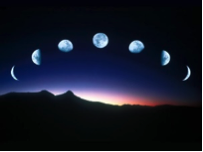 A near-by abandoned airplane hangar on a defunct air field made available by the Parks Department, served as a studio in which I “notated” the nightly improvisations. I created the visual score from abstract reflective shapes that spiraled as seven spokes on transparent 12 – foot moon discs. One moon disc for the music from each of the four phases of the moon, each one with seven spiraling arms for the seven nights in the phase. Making musical notation equivalents of the visual scores, I created a piece which had been commissioned by The Orchestra of Our Time. The moon discs were to fly above the orchestra like glimmering kites during the premiere.Thru the four orchestral movements, Thunder Moon, Dark Moon, Birth Moon & Riotous Moon, the alacrity of the midnight moments percolated in seven simultaneous radiants of orchestration. Over the orchestra, conducted by Joel Thome at the Guggenheim Museum, my soprano performance of the lyrics circled: The Moon Dreams Her in Mist Eye on Molten Black. The Moon Imagines Her in Ultra Violet Heart. The Moon Loves Her on Sailing Mouths Siren Blue… R. A. Fish in his review for Ear magazine called it a work of “multi-dimensional simultaneity.” Goddesses
A near-by abandoned airplane hangar on a defunct air field made available by the Parks Department, served as a studio in which I “notated” the nightly improvisations. I created the visual score from abstract reflective shapes that spiraled as seven spokes on transparent 12 – foot moon discs. One moon disc for the music from each of the four phases of the moon, each one with seven spiraling arms for the seven nights in the phase. Making musical notation equivalents of the visual scores, I created a piece which had been commissioned by The Orchestra of Our Time. The moon discs were to fly above the orchestra like glimmering kites during the premiere.Thru the four orchestral movements, Thunder Moon, Dark Moon, Birth Moon & Riotous Moon, the alacrity of the midnight moments percolated in seven simultaneous radiants of orchestration. Over the orchestra, conducted by Joel Thome at the Guggenheim Museum, my soprano performance of the lyrics circled: The Moon Dreams Her in Mist Eye on Molten Black. The Moon Imagines Her in Ultra Violet Heart. The Moon Loves Her on Sailing Mouths Siren Blue… R. A. Fish in his review for Ear magazine called it a work of “multi-dimensional simultaneity.” Goddesses Concurrently, I set the verses Goddess Blessing and Ariel’s Song from Shakespeare’s Tempest. At Prospero’s bidding Ariel summons three goddess spirits, Iris (goddess of the rainbow), Juno (queen of the gods) and Ceres (goddess of agriculture) to perform at the celebration of the lovers’ engagement.Accompanied by an innocent harp they wish the couple honor and riches, prosperity and plenty. It is a foreshadowing of what is to be my goddess symphony Anodos. Anodos is the Greek word meaning the goddess arising – out of the sacred bath, out of the underworld, out of the ever-evolving sea.
Concurrently, I set the verses Goddess Blessing and Ariel’s Song from Shakespeare’s Tempest. At Prospero’s bidding Ariel summons three goddess spirits, Iris (goddess of the rainbow), Juno (queen of the gods) and Ceres (goddess of agriculture) to perform at the celebration of the lovers’ engagement.Accompanied by an innocent harp they wish the couple honor and riches, prosperity and plenty. It is a foreshadowing of what is to be my goddess symphony Anodos. Anodos is the Greek word meaning the goddess arising – out of the sacred bath, out of the underworld, out of the ever-evolving sea.In Ariel’s Song I released Ariel’s mercurial nature with vocal acrobatics and rhapsodies. The instruments scurried on vibrations of strings and winds underscoring Ariel’s lyrics of liberation from Prospero’s spell: Where the Bee sucks there suck I/ in a cowslip’s bell I lie. There I couch when owls do cry/after summer merrily shall I live now/ under the blossom that hangs on the bough.Desiring to contribute to liberating Western civilization from the disability of gender inequality, I decided to write a goddess symphony in which she would arise out of patriarchal banishment.
Anodos required investigation into the historical period when god was a woman. I was inspired by the discoveries of the archeologist Marija Gimbutus and absorbed her research. The feminist authors of women’s spirituality, Buffie Johnson, Chirstine Downing, Starhawk, Diane Stein, Barbara G. Walker, Merlin Stone and others were a revelation of knowledge previously buried and hidden. My book shelves were heavy with their exposés and remain so to this day. I was excited to share this information with the world through my music. To express the sense of worth and empowerment I wished for all, I settled on four ancient goddess heroines, Aphrodite, Pandora, Persephone and Hera.These orchestral portraits drew on the goddess myths in their full power – before they were turned on their heads; when Hera was the supreme being, not Zeus; when Persephone was the immortal who transported one through the underworld to reincarnation, not the concubine of Hades; when Aphrodite held the key to life, not the means of a lustful romp; when Pandora was a divine being pouring knowledge from her vase about how to grow food and make clothing from cotton and wool, not reduced to a mortal woman unleashing pestilence from a box.
Anodos (The Goddess Arising), was premiered by the Canton Ohio Symphony, Gerhardt Zimmermann conducting. During the rehearsals for the premiere, with canny synchronicity, a backstage TV silently played the Anita Hill/ Clarence Thomas congressional hearings. The Mayan CalendarBefore Anodos, Zimmermann had premiered my Mayan inspired work Burning in the Center. The composition began one day in my Catskill Mountain studio when the book shelves fell from the wall with an arcane crash which put me on a whole new path of exploration. On the floor a book lay open to a poem by Jose Arguelles.The poem suggested the eternal light of our deathless Being: I am the center/I am the point from which each direction goes/I am the seed from which time grows and flows around me/ In days that are without number a thousand suns surround me/and I am the sun burning in the center…
In 1987, Arguelles popularized the ancient Mayan calendar revealing that one of the great 5000 year cycles was concluding in 2012. He set a date in 1987 as a 25 year run up to this event and called it the Harmonic Convergence. In 1987, the year of the Harmonic Convergence, my setting of Arguelles’ enigmatic poem was given its premiere with Zimmermann conducting the North Carolina Symphony and Chorus. Heart like a Wild RiverIt was becoming clear to me that I had a philosophical affinity with some aspects of Indigenous spirituality – in particular, the feeling of the essence of a thing – the great mystery in the rock, tree, wind, you, me.Traveling to the Yucatan, Wyoming, Colorado and Arizona to explore this affinity I ended up at The Wurlitzer Foundation in Taos, New Mexico which allowed me to immerse myself in the music and rituals of the Pueblo, Hopi and Havasupai Nations of New Mexico and Arizona.
The waters of the Rio Grande and Colorado rivers were the stimulus for Heart like a Wild River. Sketching with colored markers the motion and hue of the river waters at different points, I then created three movements of music through the transference of those sketches to the sounds of a string trio.Kyle Gann writing in the Village Voice praised my “ear for gorgeously original textures…she has a refreshing lack of interest in the one-idea piece, and is fearless about turning her music on a dime and racing off at a right angle…”Kick in the Gut HistoryThe exploration of Native America put me face to face with the role of the European in Native American history, what Ojibwe novelist Louise Erdrich calls “kick in the gut history.” She further says, “For years our people have struggled to resist an unstoppable array of greedy and unstable beings.” It filled my heart with a turbulent sadness and I wanted to respond by transforming bitter reality through artistic transcendence.
At the bottom of Grand Canyon by the Havasupai waterfalls I taught myself to play the Hopi flute. When I returned to NYC I begin writing the Vision Series, a sequence of compositions, unfolding over decades, which combines Indigenous instruments of the Americas with classical European instruments for the purpose of intercultural exchange and understanding. The Vision Series Vision I is a musical journey in which the Hopi flute appears and disappears within the orchestral textures which build to a shattering climax leaving the closing Native flute melodies cradled in a mist of apparitions. In the Village Voice, reviewer Kyle Gann said “Ms. Sainte Croix’s music is aiming at ecstatic spirituality with non-European derived rhythms and motives.” Opera in the Rainbow
The Rainbow Mother Weaves Hummingbird Dream Bundles is my first of two operas on a Mayan theme. A child yearning to find his unique, creative voice is aided by perceptive Hummingbirds, savvy Rock and Animal People, Rainbow Dancers and Chanters, Fear Sayers & Whirlers, Twirlers and Leapers in the home of the Rainbow Mother, the Mayan goddess Xochiquetzul. In subsequent performances as many as 1000 children looked the opera’s Monster of Fears in the Eye and grappled with The Cactus People, notably the production of Sandy Collins’ string orchestra program at Turtle & Island Lake Schools in Shoreview, Minnesota.
The final choral number of the opera is The Clouds, a paean to the everlasting sky which I heard in a dream. The two part choral writing is supported by rising incremental melodies which leave trails of vapors like a cumulus cloud. The lyrics by Dorothy Aldis: If I had a spoon as tall as the sky/I’d dish out the clouds that go slip sliding by/ I’d take them right in and give them to cook/ and see if they tasted as good as they looked are set in choral rounds capped by ascending soprano obbligato.Abstract Musical Chamber TheatreAbstract musical chamber theatre is a term I invented to describe chamber music that has elements of opera. Rise Up! is one of these. The premiere of the piece included a Ringing Tree sculpted by visual artist, Greg Decker and harp played by Lisa Tannebaum. The sculpture held wind chimes which cajoled the harpist out of her driving, melody woven harmonies, into the world of dance.
Nancy Allison created the Dancer role. Her costume by designer Chey Buckuswalcott was fashioned from painted silk which caused the dancer to look like a molten sunrise. The non-linguistic vocal lines were sung by tenor, Tony Alioto. Allan Kozinn of the NY Times said about it “Rise Up! is an evocative dance piece about overcoming intolerance, that showed Ms. Sainte Croix’s ability to use spare force eloquently.”Cherokee, Navajo-Ute, Apache, Duwamish, Hopi, Kwakiutl
Matt Sullivan, the masterful oboist in the group he originated called Heliophere is of Cherokee descent. He asked me to write Vision II, a musical depiction of Cherokee history spanning from pre-European contact, through removal from their lands to their ultimate survival and thriving. It features driving cello ostinatos, haunting Native flute lines, explosive counterpoint and a complex rhythmic layering of 17 against 8 to tell its tale.
The Durango, Colorado and Bozeman, Montana Symphonies led by conductor Arthur Post, programmed and toured Vision II in the west, featuring the renowned Navajo-Ute American Indian flutist, R. Carlos Nakai. As we drove from venue to venue, he shared his insights with me saying “America is not the government – it is individual people getting together and creating things” – and, he added surreptitiously, wiping out racial divisions with a few words, “anyone born here is a Native American.”In Vision II Kyle Gann found a “profound appeal to spiritual nature made through the music’s vivid stasis and lightning quick transformation.” Allan Kozinn in the NY Times wrote: “Her modern and rich textured style…draws on rhythms, melodies and structural elements of Hopi, Cheyenne and Cherokee music yet retains a modernist sophistication, as do some of Bartok’s works based on Hungarian peasant songs.”
In The Sun, the Darkness and the Wind a plaintive melody arches over hypnotic broken chords. The lyrics are the words spoken by Geronimo (Apache) and Chief Seattle (Duwamish) when forced to give their lands to the US government. Geronimo said: The Sun, the darkness and the wind are all listening to what we now say. Chief Seattle said: How can you sell the sky or the warmth of the sun? The earth is sacred to my people/ every shining pine needle /every mist in the dark wood /in our memory is holy.
Native American Song Cycle uses the lyrics by Kwakiutl, Cherokee and Hopi writers for young people to perform.The opening piece Kalakuyuwish refers to the story of the first totem pole as told by Klalish, a Northwest American Indian story keeper. In the composition, as a narrator tells the story, the chorus depicts the animals who shed their animal skins exposing human bodies. They begin to dance like humans. The drama is accentuated with a driving bass drum beat and interjections of facile recorder melodies.The second song is a dreamy setting of Steve Crow’s stunning Revival: Snow is mind/falling, a continuous breath/ of climbs, loops, spirals/dips into the earth/like white fireflies/wanting to land, finding/a wind between houses,/diving like moths/into their own light/so that one wonders/ if snow is a wing’s/ long memory across winter.Concluding the cycle is I Dream of Meeting… written by an 8 year old Hopi girl named Natalie. Her bright wish for world unity is sung by a unison chorus perched on an energetic beating of chords in the piano. I dream of meeting/our Hopi Ancestors/and we sit together and talk/About the time that will come—The time when all of us are together/And the waters of the rivers are full/and the sun has warmed the cold part of the world/and all the people are setting in a huge circle/and they are brothers and sisters/ Everyone!/That’s when all the spirits/will dance and dance/and the stars will dance and/The sun and moon will dance/and the birds will swoop down and they’ll dance/And all the people everywhere will stand up and dance/ and then they’ll sit down again in a big circle/So huge you can’t see where it goes/And they are happy/Everyone!
In From Far Beyond the Blue Sky, another work of abstract musical chamber theatre, a singer in an ancient Plains Indian mask appears at the center of the piece and slowly crosses the stage. Singing a chant as the instruments hover in otherworldly stasis, the passage alters the inchoate music of the ensemble into cascading streams of radiant sonority. From below a bass melody of compelling force propels the music to its unified conclusion. The piece was mounted again by the conductor Dorothea Agnoletto in a chamber orchestra arrangement at the Haus der Musik in Vienna, Austria. The Hungarian gypsies who were hired to play the strings parts neglected to return for the performance. We scrambled to create an alternate version and the show went on.Down and In
My second opera on a Mayan theme How Music Came to Earth is bilingual in English and Spanish and uses a pre-Columbian creation poem as its libretto. The text from a Mayan codex, one of the few surviving, tells in exquisite language, the story of how music was stolen from the Sun and brought to the Earth by the Wind. It begins: Tezcatlipoca – the god of heaven/and the four quarters of the heavens/came to earth and was sad./He cried from the uttermost depths of the four quarters: “Come, O Wind!/The querulous wind/Scattered over earth’s sad bosom/rose higher than all things made/and, whipping the waters of the ocean/and the manes of the trees/Arrived at the feet of the god of heaven. There he rested his black wings/And laid aside his endless sorrow…Wind traversed the earth that was plunged in silence/and trod with his strength of breath pursued/till he reached the heavenly roof of the world/where all melodies live in a nest of light… Based on my research in the Yucatan, the recitatives are backed by relentless irregular beats while the clarifying arias ride on waves of luscious arpeggios. The music blooms into contrapuntal complexity when the Wind Dancer enters the House of the Sun. It is scored for ensembles of dancers and musicians, a solo Dancer as the Wind, Afro Caribbean drummers, children playing recorders & dancers portraying the Love Song Duet, the Cradle Song Quartet, the Six Golden Flutes, Storm Clouds and Musicians in the House of the Sun.
Dear One – The love letters of Anton Chekov to his wife Olga, arranged by Rogelio Martinez, are the text of this song. To express the character of their relationship which was of two people, each in a different world, I use a rhythmic technique found in some Native American folk music. An unbroken pulse of five beats in the electronic accompaniment prevails while the vocal line remains consistently in four.
I wrote The Bright Leaf Trios after returning from Taos. It opens with the poem I wrote to capture an epiphany in the New Mexico landscapes. Naked as a Bright Angel/ I comb the Yellow hair of the Dawn/ and so the Dazzling door of my Heart/ does not close like a Bone. The poem is spoken by the musicians as they play the first movement, entitled Naked, followed by four movements Lyricism of the Lake, Glittering Day, Angelic Mysterium & Flower of Fire. The pieces capture the many aspects of light in the landscapes. This work, which tests the range limits of the flute, cello and piano, was described by New York Times reviewer Allan Kozinn as having a “simple, direct communicative style, colorful, varied, sweetly melodic and rhythmically vital…
Vision III recounts the invasion of the Americas by Europeans and the effect on Indigenous populations. Reaching from pre-Columbian time into the future, the five movements are – Ancient Hustle Bustle, El Dorado, Dream Song, The Secrets Drop into Hiding and Flying Above the Festival. The Quintet of the Americas commissioned the work. They wanted a piece to integrate their collection of pre-Colombian festival masks and instruments with the wind quintet. (Photo: Quintet of the Americas)A Chamber Music America Commissioning Grant and an NEA Touring Grant was won by Barbara Oldham, the group’s founder, leader and virtuoso hornist for me to create Vision III.The tour de force instrumentation of this epic work consists of fifty Indigenous instruments, five masks and a lighting design, recreated at each venue. Included in the score are such instruments as maracas painted with Indian designs, a Colombian bamboo finger rattle, male and female gaitas, clay pico flutes, Peruvian jungle feather rattles, an ancient conch horn and various zamponas, rainsticks, shakers and drums. Also the Festival Masks – Sun/Moon, Toucan, Jaguar, Warrior and Feathered Serpent.Amazingly, Ms. Oldham fit all these carefully wrapped items into a large trunk which we transported all over NYC and from Maryland to Ohio on the tour. Amid all the complexity of mounting this challenging work the only thing that went wrong was when we got to Ohio at 4PM for an 8PM curtain, one of the musicians had forgotten his score in NYC. I got on the phone, got someone to unlock my apartment and computer in NYC, and find the part in my files and email them. It was printed by a music student in Ohio who had Finale and we played the piece by 8PM!Jim Theobald’s review in the New Music Connoisseur described my music as creating a “mystical and compelling sound world in which the composer successfully blends established musical means, new technologies and gestures with very ancient sounds and concepts, producing an often wild, primal and yet very sophisticated experience for the listener.”Northern Climes
Acadian Suite – I traveled to Maine looking for an Eastern Woodlands American Indian flute crafted by High Spirits Flutes. I tried out and bought the flute at the museum in Bar Harbor, and then searched Acadia National Park for scenes that compelled me to create music for it. I began playing the flute in these scenes, notating the pieces. The resulting seven movements are: Cliffs over the Sea, Iridescence, Sunlight is Dancing, Evening Brook, Balsam Pine Scent, Twilight Bay and Sparkling the Water. Flutist Andrew Bolotowsky has performed these pieces extensively.(Photo: Andrew Bolotowsky/Photo Credit: R.A. Fish)
While researching female shamans for a character in my opera, The Vine of the Soul, I uncovered the incredible story of Uvavnuk, a Netsilik Inuit Shaman who lived west of the Hudson Bay in the 1800s. After seeing a glowing ball of fire fall from the sky, her help to her community was legendary. She said: The Great Sea has set me in motion/set me adrift/moving me as the weed moves in a river/The arch of the Sky and Mightiness of Storms have moved the Spirit within Me/ Till I am carried away/Trembling with Joy. Written for alto flute solo, Arctic Wind uses a symphonic approach to the solo instrument and engages surprising flute growls and thwacks to convey Uvavnuk’s ecstatic relationship to the pristine endless snow, her solitary kayaking, lightening, stars and arctic birds & animals. Winter Wow! – I wrote this lyric after a euphoric walk on a January day in a Minnesota wood: The snow’s a quilt upon the hill/The brilliant air is frozen still/Inspired by something strange and deep/I set out in the day’s crisp thrill./Stepping spacious among the trees/Their branches of suspended ease/All time is one, mine with the sun/Caressed by light and fragile breeze./The sweep of white – reason defies/As it dark of season belies./Across the blue a cardinal streaks/Surprise! Some shiny starlings rise/A sparrow claims orange berry bough/And vast as song my heart makes now/Crazy leaps in the dazzling wow!/Crazy leaps in the dazzling wow!
The serene delivery of the opening lyrics contrasts vividly with the boisterous conclusion achieved through improvisational freedom for the performers. Premiered by the Bowers – Fader Duo, for mezzo soprano and guitar. (Photo: Oren Fader and Jessica Bowers) Quantum Physics
Los pajaros blancos de la noche profunda (The White Birds of the Deep Night) was written at the Julia and David White Foundation in Costa Rica where I was studying the Cloud Forests for my rainforest opera, The Vine of the Soul. The grounds of the artist colony were called Las finca de las culabras (The Farm of Snakes) by the locals.One night, I was returning with friends to las finca de las culabras after having a late dinner in a restaurant that an ex-patriot had constructed in a tree house. The return was by way of a dark path through the forest. As we were stepping gingerly homeward, careful not to awaken any sleeping culabras, a night bird began singing in the forest. We called to the bird and it responded. Returning to my cabana, I took up my American Indian flute and began playing notes that the bird imitated, singing them back to me. In this way the bird and I composed a lengthy flute solo. In the final composition, I created an escalating expansion of piano and electric guitar lines, inspired by the idea of quantum particles and waves. This texture accompanied the song of the night bird played on a wooden flute.Quantum theory asserts that light and matter appear as particles when observed and vanish into waves of possibility when unobserved. Quantum physics demonstrates that the results of an observer observing an experiment is that the wave becomes a particle of matter. It is another way of saying that everything is alive, as Indigenous spirituality does. Related to this theme, I learned that the Indigenous Brunka People of Costa Rica notably enact a yearly ritual in which they are victorious over the conquistadors. Traveling over roads of hardened mud like corduroy, I bounced for 40 miles to a remote site to purchase a mask from them. In my composition the Brunka mask signals audience participation in which audience members make the call of the white bird of the deep night.
The Sonora Trio comprised of Andrew Bolotowsky, flutes; Oren Fader, guitars; Judith Sainte Croix, keyboards & voice premiered the piece at the Turtle Bay Music School in NYC and recorded it for the Innova Label. (Photo: The Sonora Trio – Bolotowsky/Sainte Croix/Fader/Photo Credit: Claudia Miranda)Kyle Gann has this to say about my performing ensembles: Uptown in her performing conventions and virtuosity, Downtown is her cheerful acceptance of both noisy dissonance and motionless consonance, Sainte Croix is really neither, and has clearly developed her own aesthetic influenced by global and historical, not musical, politics.
The Vine of the Soul The Vine of the Soul tells the story of a scientist, Howard who is destroying the rainforest for corporate gain. The solution to the ecological disaster lies in his rapid spiritual evolution. This is achieved in the opera by a shaman and the Spirits of Nature. The libretto I created is emotionally driven by the three women in Howard’s life – his daughter, the shaman of the forest, and the CEO of his company. In an ayahuasca type vision, the flower he is destroying and his daughter, whom he loves, merge.
Awareness of his connection to all creation dawns on him and he transforms him into a steward of the natural world. (Photo: Dancers Mark DeGarmo & Marie Baker Lee with Musicians Fader & Sainte Croix in the Visionary Dance from the opera The Vine of the Soul/Photo Credit: Claudia Miranda)The American Composers Orchestra Vision V was written through a creative process of interacting with the orchestra which is covered in detail in another article written for Journal of the International Association of Women Musicians when it won the Theodore Front Award for New Music. The piece was premiered by the American Composers Orchestra in Zankel Hall at Carnegie Hall conducted by George Manahan.
The Sonora Trio members were the soloists in the piece, myself on 88-key synthesizer; Fader on electric guitar; Bolotowsky playing Native American Eastern Woodlands flute. (Photo: The Sonora Trio rehearsing with the American Composers Orchestra/Photo Credit: Michael Geller) SuitesConvinced now that individual spiritual evolution is the best prospect for the survival of humanity on this planet, I have been exploring the wisdom writings of many cultures. The Suite of Pure Delight refers to the notion that when a human being realizes their True Self, it is a sensation of pure delight. The five songs explore this idea from a global perceptive.
Rumi, Ancient Sufi – Spinning We come spinning out of the Nothingness scattering Stars Like Dust… Gautama Buddha, Ancient Indian – One and All Do not believe in anything simply because you have heard it…Do not believe in anything simply because it is written in your religious books….But after observation and analysis, when you find that anything agrees with reason and is conducive to the good and benefit of one and all, then accept it and live up to it.
Walt Whitman, American – I Exist as I Am I exist as I am, that is enough/ If no other in the world be aware I sit content/And if each and all be aware I sit content. One world is aware, and by the far the largest to me, and that is myself… Marcelo Mella, Contemporary Chilean/Mapuche – Black Bears Black Bears and Black Berries/Never too far from each other/The secret invisible links/from Black to Black/from Bears to Berries/from the Unknown to the Know. (Reprinted with the permission of the author.)Steve Taylor, Contemporary English –The Night is Alive The night is alive, the space from the ground to the sky/is filled with a crackling electric haze/ particles spinning and clashing/ as they weave in and out of existence…every dispersed atom singing their original oneness. (Reprinted with the permission of the author.)Singing River Music a work in process, is inspired by the story of an American Indian girl whose extraordinary journey I recently unearthed. After being removed from her home in northern Alabama to Oklahoma by the US government in 1830, she walked back to her birthplace near the Tennessee River. “The rivers don’t sing in Oklahoma,” she said. She needed to get back to her river. And there is this really great part to the story, which is that a network of people protected, sustained and loved her all along her three year trek. They were ordinary Americans comprised of immigrants from around the world, Indigenous people, African American freed slaves and Whites, that she identified as having “a third eye that was open.” The constellation of pieces are: Spacious which describes the dimension arising in a person who realizes their True Nature. Written for piano and alto flute.
Touched by an Angel – A mediation on the transformative powers of love for soprano and piano premiered by Mary Hurlbut and Sainte Croix. (Photo: Soprano, Mary Hurlbut) Los cuatro acuerdos (The Four Agreements) – Don Miguel Ruiz’s ancient Mexican/Toltec wisdom set for the Bowers – Fader Duo, mezzo and classical guitar. Mother of the Universe – Lao Tzu’s portrayal of the Formless Dimension as the Womb of the Universe There was something formless and perfect before the Universe was born. It is serene…Empty… for the Bowers – Fader Duo, mezzo soprano and electric guitar
Grass – Beside every blade of grass is an Angel saying grow, grow, grow – from the Kabbalah, for jazz ensemble. (Photo Credit: Claudia Miranda)
Early on, as I am sitting in the grass of a mountain meadow, an experience of cosmic consciousness spontaneously erupts. I know that I and the grass are one – grow, grow grow…(Photo: Judith Sainte Croix/Photo Credit R.A. Fish) Appendix Instrumentation of works discussed in this article and information on how to hear the music. Judith Sainte Croix’s music is available from Sonora House Publishing /sonorahouse@yahoo.com Mailing Address: Sonora House /484 W 43rd St /Apt 44-Q /NY NY 10036 /Tele. 212-651-0283. Website: judithsaintecroix.wordpress.com Click here to see the poem Forsythia.http://www.britannica.com/biography/Mary-Ellen-Solt The Moon Dreams Her is scored for fl, trp, b tb, timp, glock, vib, chimes, wood dr, bowed cym, temple bell, bdr, thundersheet, glass & metal wind chimes, 5 gongs, bell tree, pn, 2 synths, vln, vc, cb. 1983. Goddess Blessing is written for female voices and harp. 1982Ariel’s Song has numerous arrangements: voice/fl; voice/fl/gtr; voice/pn or gtr; voice/pn/vln/vc/gtr. 1983 Anodos (The Goddess Arising) scored for orchestra ww in 3; 4 hn, 4 trp, 2 tb, b tb, tuba; timp, 5 perc; cel, hrp, pn; and str 16 14 12 10 8. 1991 Burning in the Center is scored for string orchestra and SATB Chorus. 1987 Heart like a Wild River is scored for violin, viola and cello. It was premiered by Orchestra of St Lukes at the Dia Art Foundation in NYC. 1996 Vision I is scored for a chamber orchestra – fl, cl, bas, hn, trp, perc, pn, str qt & Hopi Native American flute. Recorded by recording engineer Marcelo Mella on the CD Visions of Light and Mystery – Sonic Music Label. 1991. Hear an excerpt from Vision I at https://judithsaintecroix.wordpress.com/ The Rainbow Mother Weaves Hummingbird Dream Bundles is scored for ensembles of children as Hummingbirds, Cactus, Rock and Animal People, Rainbow Dancers and Chanters, Fear Sayers & Whirlers, Twirlers and Leapers, soprano, boy soprano, child vocal soloists, children’s chorus, pn, fl, vc, thunder sheet & hand drum with Voyetra and M1 synthesizers on CD. The premiere was produced and directed by Jane Whitehill, of the La Gran Scena Opera at PS 9 in Manhattan with a commissioning grant from Meet the Composer. 1989 The Clouds – For soprano and two part chorus with various arrangements of accompaniments: fl, vc, pn; vln, vc, pn; fl, gtr, pn; and fl, pn. 1989Rise Up! is scored for harp, dancer, sculpture and voice. Written for Lisa Tannenbaum’s harp recital debut at Weill Recital Hall at Carnegie Hall. A solo harp version of the piece exists as well. 1998Vision II is scored for Native American flute & drum, oboe & oboe d’amore, vln, vla and vc. It was premiered at Merkin Hall in NYC by Heliosphere with Matt Sullivan playing Native American flute & drum, oboe & oboe d’amore. Heliosphere’s performance was recorded by recording engineer Marcelo Mella and released on the CD Visions of Light and Mystery – Sonic Music Label. 1997. Hear an excerpt from Vision II performed by Heliosphere at https://judithsaintecroix.wordpress.com. The Sun, the Darkness and the Wind is scored for various aarrangements for baritone, soprano or mezzo with various accompaniments: al fl & gtr; pn; or gtr. 1999. Hear a recording of Judith Sainte Croix singing this song at https://judithsaintecroix.wordpress.comNative American Song Cycle is written for chorus, b dr, recorders and piano. These songs were commissioned during a composer residency funded by the New York State Council on the Arts and premiered by choral director Janice Lynx at PS 92 in Queens, NY. 1998From Far Beyond the Blue Sky is scored for counter tenor or mezzo soprano, American Plains Indian mask, lighting, fl, ob, harpsichd, timp, gtr, 2 vlns, vla, vc & electronics on CD and was commissioned by the Queens Chamber Band of NYC who premiered it at Merkin Concert Hall in NYC. 1999 How Music Came to Earth is scored for dancers and musicians, a solo Dancer as the Wind and ensembles of Afro Caribbean drummers, children playing recorders & dancers playing the parts of the Love Song Duet, the Cradle Song Quartet, the Six Golden Flutes, Storm Clouds, Musicians in the House of the Sun, soprano, mezzo soprano, tenor, bass baritone, chorus and a chamber orchestra consisting of fl, wooden fl, clay ocarina, shakers and rainsticks, 4 trp, vc, elec. bass, perc, timp, pn, cel, with optional back up performance synthesizer CDs, mics and echo device./ It received a full production from the Syracuse based Society for New Music at the Cazenovia Counterpoint Festival produced by Neva Pilgrim and conducted by Heather Buchman. 2012.Dear One is scored for tenor and electronics on CD. Recorded with Tony Alioto singing on the CD Visions of Light and Mystery – Sonic Music Label. 1997 The Bright Leaf Trios is written for flute, cello and piano. The five movements are: Naked, Lyricism of the Lake, Glittering Day, Angelic Mysterium & Flower of Fire. Recorded on the CD Visions of Light and Mystery – Sonic Music Label. 1995 Vision III is scored for piccolo, flute, alto flute; oboe, English horn; clarinet; French horn and bassoon. Maracas painted with Indian designs; Mexican onyx wind chimes; a chromatic zampona with two rows of pipes, with at least 2 octaves with chromatic pitches from middle C to high G; a conch shell horn; 2 Peruvian gourd guiros with wooden or metal strikers; quena or bamboo flute in G (or tarka can be used in Mvt 2);4 small, high-pitched, clay pico flutes (also known as an ocarinas); metal guiro with metal striker; a male (low drone) and a female (treble) pre-Colombian gaitas; a low pitched Native American handheld drum with beater; one small-sized (17 pipe) zampona, one medium-sized (17 pipe) zampona and one large sized ( 19 pipe) zampona in Mi (e minor/G major); 3 large, long rainsticks; 2 chuluses (goat hoof rattles); a seed pod rattle; a Colombian bamboo finger rattle (can substitute a seed pod rattle); 3 medium, 2 low and 2 bass clay pico flutes; small brass bell; Peruvian jungle feather rattles; Peruvian bamboo slit drum.Festival Masks: Sun/Moon/Toucan /The Jaguar /The Human/Warrior/ Feathered Serpent Festival Shaker (a small 1 ½ foot rainstick decorated with feathers and colorful, woven sashes can be substituted for the Feathered Serpent Shaker.Theatrical Direction recommended./Tech: A sound system or portable CD player with speakers. Performance CD Lighting /Echo device –2 Mics /2 Mic clips/2 Mic stands with booms/2 Mic Cables/2 five input plug boxes – one for stand lights, one for electronics. The Quintet of the Americas premiered at The Americas Society in NYC. 2001.Hear an excerpt from Vision III performed by The Quintet of the Americas at https://judithsaintecroix.wordpress.com.Acadian Suite – for 6 hole American Indian Flute – Cliffs over the Sea, Iridescence, Sunlight is Dancing, Evening Brook, Balsam Pine Scent, Twilight Bay and Sparkling the Water.Flutist Andrew Bolotowsky premiered the work and has performed these pieces extensively in parks, schools, churches, birthday parties, art & dance studios and concerts halls of NYC. To some of the songs I added lyrics which have been performed as solo voice or chorus with the flute. 2001Click here to hear Andrew Bolotowsky performing Twilight Bay.https://www.youtube.com/watch?v=preEAddjvqo Arctic Wind for solo alto flute. Premiered in NYC by Andrew Bolotowsky. 2008 Winter Wow! for guitar and mezzo soprano. A version for piano and voice also exists. 2014 Los pajaros blancos de la noche profunda (The White Birds of the Deep Night) for piano, wooden flute, and electric guitar. This work is recorded by the Sonora Trio on the collection NYFA: 25 Years of New York New Music – Innova Label, wooden flute performed by Andrew Bolotowsky, electric guitar performed by Oren Fader and Judith Sainte Croix performing on piano. 2007. Click here to see a live performance with Mark DeGarmo dancers of Los pajaros blancos de ls noche profunda. https://www.youtube.com/user/TheSonoraTrio Vision V is scored for Abenaki Native American Flute/Electric Guitar with Effects Unit/Cassio 88 Key Keyboard Synthesizer/Flute doubling on Piccolo & Alto Flute/Oboe/Clarinet in B Flat/Bassoon/Horn in F /Trumpet in B Flat/Trombone/Tuba /Percussion One on Crotales, Low Tenor Drum, Bass Drum, Medium Native American Frame Drum, Glockenspiel & Finger Cymbal/Percussion Two on Small and Medium Tam Tams, Medium Tenor Drum, Larger Native American Frame Drum, Maraca & MarimbaPercussion Three on Large Tam Tam, 4 Tom Toms /Wooden Slit Drum, Vibraphone & Xylophone/Harp/Piano doubling on Celesta/Six Violin I/Five Violin II/Four Violas/Three Violoncellos/Two Contrabasses/Audience Participation/Projections. Premiered by George Manahan conducting the American Composers Orchestra/Soloists in the Premiere: Andrew Bolotowsky, Native American Flute; Oren Fader, Electric Guitar with Effects Unit, Judith Sainte Croix, 88 Key Polyphonic Synthesizer. 2013. Click here for a youtube film about the creative process of Vision V. https://www.youtube.com/watch?v=kVcHtyDdD04 The Vine of the Soul is scored for the Sonora Trio playing guitars, flutes, synthesizers and piano, electronics on CD and six singers. In the concert version premiere, the lineup was: coloratura soprano Courtenay Symonds as The Lizard, A Spirit Being; soprano Mary Hurlbut as Chirohe the Shaman; mezzo soprano Jessica Bowers as Elise Grimes the CEO: tenor Chad Kranak as Quintin, the COO; helden tenor/baritone, Douglas McDonnell as Howard; and bass baritone David Schmidt as Julian, the CFO. I wrote the libretto in collaboration with Diana Carulli. The concert version premiere was directed by Kim D. Sherman. The opera was developed in part with a grant from the Jerome Foundation and an award from the NYC Department of Cultural Affairs – which funded the concert premiere of the complete opera in NYC at Christ and St. Stephens Church. 2001 – 2013.Click to hear and see a live performance of the Visionary Dance from the Vine of the Soul at Baruch College performed by The Sonora Trio. https://www.youtube.com/watch?v=qnzPZ-iGv4AClick here to see a youtube of a live recording of the Trio Dance from the Vine of the Soul performed by the Sonora Trio. https://www.youtube.com/watch?v=UhK2-9XTQxMHear the Acara, Dance for the Heart of the Jaguar, The Spirts of Nature and Victory Dance performed by the Sonora Trio from the Vine of the Soul at https://judithsaintecroix.wordpress.comClick here to see a performance of the aria Howard’s Dilemma from the Vine of the Soul at the Flea Theatre in NYC performed by Doug McDonnell and the Sonora Trio. https://www.youtube.com/watch?v=sDWj-M4tcEYClick here for a youtube of the live recording of the complete concert premiere of the Vine of the Soul. https://www.youtube.com/watch?v=LyNjQrV3EQ4The Suite of Pure Delight scored for soprano and mezzo soprano, two part chorus, fl, 2 violins, cello & piano. The songs are: Spinning, One and All, I Exist as I Am, Black Bears, The Night is Alive. It was written for premiered and conducted by Gail Archer, director of the Columbia-Barnard Chorus in the Muse’s Voice Series. 2015Singing River Music is a work in process consisting of: Spacious for alto flute & piano. /Touched by an Angel for soprano and piano. /Los cuatro acuerdos (The Four Agreements) for mezzo soprano and classical guitar. Listen to a recording of Los cuatro acuerdos on Soundcloud Ofader Judith Sainte Croix –New work./Mother of the Universe for mezzo and electric guitar. /Grass for jazz ensemble, singers and audience. 2015 – 2016.


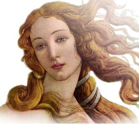
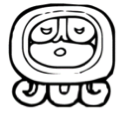
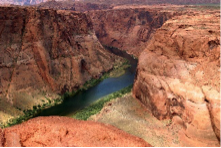
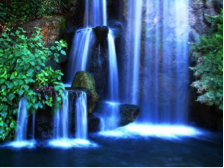

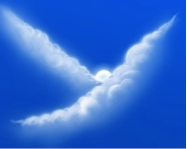
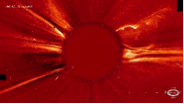
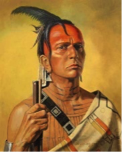
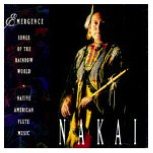
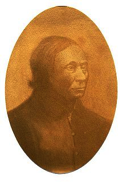

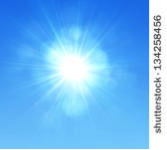
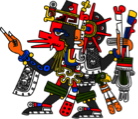
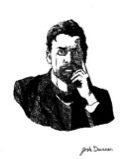
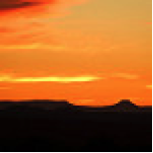
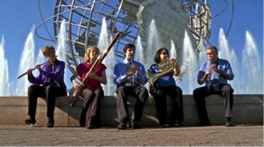
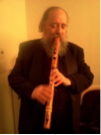
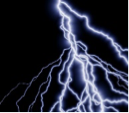
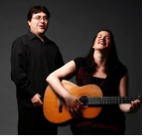
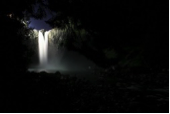
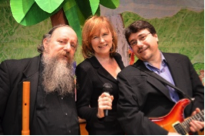
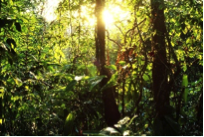
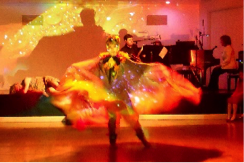
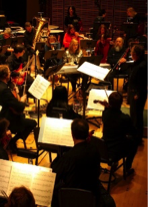
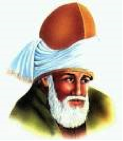


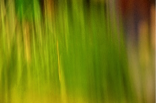
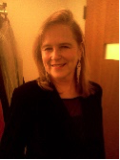
Recent Comments